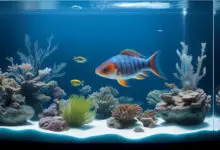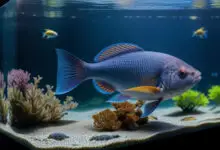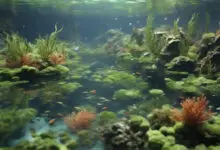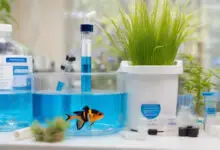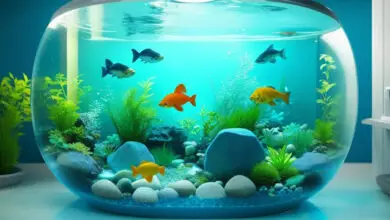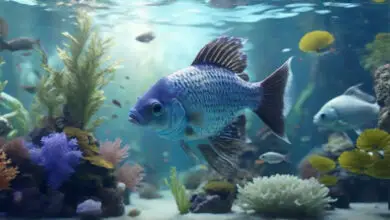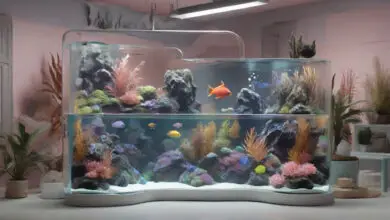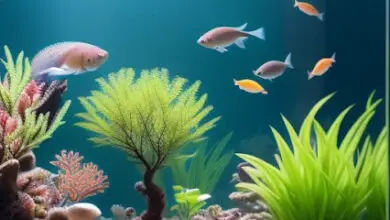Natural Algae Control Methods
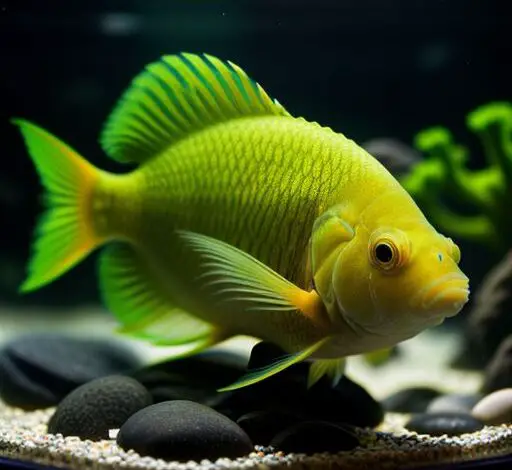
Controlling algae growth is one of the most common issues aquarium owners face. Instead of using harsh chemicals, there are some effective natural methods to keep algae under control in your tank.
One easy technique is to add algae-eating fish like plecos, otocinclus catfish or Siamese algae eaters. These fish will happily munch on many types of algae. Adding live aquarium plants can also help absorb excess nutrients and outcompete nuisance algae.
Using a UV sterilizer is another green solution for controlling algae spores suspended in the water. The UV light prevents them from reproducing and spreading. Power heads can also be used to increase water circulation, preventing algae from taking hold on surfaces.
Manually removing algae growth when spotted and performing routine scrubbing of the tank walls and decor is vital. This denies algae the ability to establish itself.
Finally, the number one defense is limiting light exposure to 6-8 hours per day. Algae needs light to thrive, so controlling photoperiods via an automatic timer drastically slows its growth.
Eco-Friendly Water Conditioners
Natural Water Treatments
Tap water contains heavy metals, chlorine and chloramines that can be harmful to aquarium life. An environmentally sustainable alternative to chemical conditioners is using natural water additives.
Dried alder cones release tannins and humic acids into the water, which neutralizes heavy metals. Products with extracts from the Indian almond leaf or Catappa leaf work similarly.
Peat moss filters out toxins through ion exchange and adsorption. It also softens water by lowering the pH. This prepares tap water to be compatible for species that require soft, acidic conditions.
Sustainable pH Adjusters
Chemical pH adjusters tend to be caustic or alter conditions too rapidly for fish comfort. Some holistic options are alder cones, peat moss, driftwood, aquarium minerals, crushed coral and argonite sand.
These gradually buffer pH changes over time. Plus, they replicate the fish’s natural habitat unlike chemicals. This reduces stress on their physiology.
Eco-Safe Dechlorinators
While most dechlorinating products are safe when used properly, seeking natural alternatives better protects aquatic ecosystems.
Simply allowing tap water to agitate overnight dissipates much of the chlorine. Vitamin C (ascorbic acid) works as an eco-friendly water conditioner by actively neutralizing chlorine.
Products containing sodium thiosulfate or glycine are effective yet biodegrade without leaving toxic residues compared to harsher chemical agents.
Sustainable Filtration Techniques
Aquarium filtration plays a critical role keeping water clear and parameters stable. There are many eco-friendly designs to achieve this sustainably.
Sponge filters are an easy bio-filter run by air pumps. They harbor colonies of beneficial bacteria without needing replacement parts that add plastic waste.
Fluidized bed filters use sand substrate. Water flow suspends and agitates the sand, allowing microbes to accumulate for natural biological filtration.
Moving bed filters work similarly, tumbling biomedia like lava rock or argonite sand. The abrasion method filters mechanically while the porous rocks become encrusted with nitrifying bacteria.
Refugiums are sections partitioned off that grow macroalgae. This absorbs excess nutrients like nitrate from the water, achieving chemical filtration naturally through thriving plant growth.
Green Solutions for Fish Health
Preventative fish health management through natural techniques relieves reliance on antibiotics and harsh medications.
Quarantining new arrivals protects the main tank from contagions. Feeder fish in particular should be isolated, verified disease-free and treated prophylactically before adding.
Providing ideal environmental conditions bolsters immunity against pathogens. This includes appropriate tank size, shoal numbers, clean water, suitable temperature, pH and hardness.
High quality foods with immunostimulants like garlic, vitamins C and E, beta glucans and astaxanthin may help prevent infectious diseases without chemicals.
Salt and heat have antiseptic, antimicrobial properties. Aquarium salt baths boost protective mucus layers while raising temperatures accelerates life cycles of parasites. Always verify tolerance before applying to sensitive species.
Environmentally Conscious Pest Control
Unwanted pests like aquatic snail infestations or hydra outbreaks can rapidly overwhelm tanks. Conscientious solutions remove these organisms humanely without toxins.
Hand removal is time intensive but avoids harming desired inhabitants. Trapping unwanted guests via lettuce or cucumber slices overnight makes systematic manual extraction easier.
Introducing natural predators like loaches, pufferfish or Anentome helena snails for hydra control reduces populations without poisons. However, they must be removed once pests are eradicated to prevent predation on other tankmates.
Frequent gravel vacuuming above the substrate line during water changes clears out organic debris. This denies nuisance snails food sources and habitat space to prevent exponential population booms.
Eco-Friendly Aquarium Maintenance Tips
Regular tank maintenance ensures water quality remains safe for livestock health between partial water changes. Eco-conscious aquarists can apply some green solutions here too.
When cleaning filters avoid replacing media cartridges unless falling apart. The beneficial bacteria colonies living within them perform the vital nitrogen cycle keeping ammonia and nitrite at undetectable levels.
Reduce plastic waste by using reusable filter floss pads. These can be rinsed in old tank water then reused many times over. Replace with sustainable materials like wool when they finally wear out.
Clean algae buildup manually via scrubbing decor, tank walls and equipment rather than chemicals. Use soft microfiber clothes and toothbrushes.
Power usage of equipment can be reduced with efficient air pumps, lower wattage heaters and LED lighting on timers set for 6-8 hours maximum illumination periods per day.
Frequently Asked Questions
Can I Use Natural Algae Control Methods in a Saltwater Aquarium?
Yes, adding cleaner crew packages with snails and algae eating fish is very effective. Reducing light periods, manual removal and maintaining stable water quality controls growth too. UV sterilizers work well also.
Are Eco-Friendly Water Conditioners Safe for Use With All Types of Fish?
Most natural water additives like Indian almond leaves, peat moss and driftwood release tannins that softly acidify water. This prepares conditions for species preferring lower pH. Use prudently with fish needing alkaline water and monitor chemistry routinely.
What Are Some Sustainable Filtration Techniques for Larger Aquariums?
Fluidized bed filters, moving bed bioreactors and planted refugium sections excel at keeping water pristine in big tanks. These utilize natural biological processes without much consumer waste for replacement parts over operational lifetimes spanning years.
How Can I Use Green Solutions to Prevent Fish Diseases in My Aquarium?
Quarantine new arrivals first to avoid introducing pathogens. Furnish aquarium with proper conditions matching species requirements since stress and poor water quality negatively impact immunity. Vitamin/mineral enriched diets may help resilience. Monitor livestock closely for signs of illness for early intervention.
Are There Any Environmentally Conscious Pest Control Methods That Are Safe for Shrimp and Snails in My Tank?
Manual removal of unwanted organisms is safest for desired shrimp and snails versus chemical treatments or unsafe predators. Traps lure pests overnight for systematic extraction next day. Also reducing excess food and debris via gravel vacuuming makes the environment less hospitable for nuisance pests to get out of control.
Conclusion
Maintaining aquarium ecosystems sustainably utilizes natural biological processes for filtering water, controlling algae, adjusting water chemistry and keeping inhabitants healthy. This reduces reliance on harsh chemical agents that may disrupt delicate bio-balance or degrade water quality over time with residual buildups.
Applying green solutions around manual algae removal, beneficial bacteria cultivation, appropriate aquascaping, light control and conscientious equipment selection contributes to eco-friendly aquarium ownership. Always strive for balance between technology and natural methods for optimal stability.
